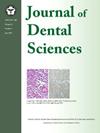评估基因组和突变测序在口腔白斑恶性转化中的诊断价值和前景
IF 3.1
3区 医学
Q1 DENTISTRY, ORAL SURGERY & MEDICINE
引用次数: 0
摘要
口腔白斑(OLK)恶性转化的基因组和突变测序已出现势头。在这篇简短的文章中,我们确定了5项关于该问题的回顾性随访研究和5项使用福尔马林固定石蜡包埋组织的截面比较研究。拷贝数改变(CNA)随口腔发育不良程度的增加而增加。基于cna的算法在评估OLK恶性转化风险方面的预测性能优于组织学分级。重要的是,我们对从个体研究中提取的常见口腔癌驱动基因的突变频率进行了汇总分析。最常见的突变基因为TP53(26.26%, 95%可信区间(CI)为20.61 ~ 32.82%),其次为NOTCH1 (23.23%, 95%CI为17.87 ~ 29.61%)、FAT1 (16.67%, 95%CI为12.08 ~ 22.52%)和CDKN2A (10.61%, 95%CI为6.98 ~ 15.73%)。总的来说,利用基因组和突变测序建立OLK患者的分子分型和风险分层是有希望的。我们推荐设计良好的研究,有较大的OLK患者群体,有临床终点,使用新鲜或冷冻组织,并匹配最佳样本作为进一步研究的对照。本文章由计算机程序翻译,如有差异,请以英文原文为准。
Evaluating the diagnostic value and prospects of genomic and mutational sequencing in malignant transformation of oral leukoplakia
Genomic and mutational sequencing in malignant transformation of oral leukoplakia (OLK) has emergingly gained momentum. In this short communication, we identified 5 retrospective follow-up studies and 5 cross-section comparative studies on this issue using formalin-fixed paraffin-embedded tissues. Copy number alteration (CNA) was demonstrated to increase with the grade of oral dysplasia. CNA-based algorithms showed better prediction performances than histological grade in assessing the risk of OLK malignant transformation. Importantly, we conducted a pooled-analysis on the mutation frequencies of the common oral cancer driver genes extracted from individual studies. The most common mutation gene was found to be TP53 (26.26 %; 95 % confidence intervals (CI), 20.61–32.82 %), followed by NOTCH1 (23.23 %; 95%CI, 17.87–29.61 %), FAT1 (16.67 %; 95%CI, 12.08–22.52 %), and CDKN2A (10.61 %; 95%CI, 6.98–15.73 %). Collectively, it is promising to establish molecular subtyping and risk stratification of OLK patients using genomic and mutational sequencing. We recommend the well-designed studies with a larger OLK patient population with clinical endpoints using fresh or frozen tissues and matched optimal samples as controls in further investigations.
求助全文
通过发布文献求助,成功后即可免费获取论文全文。
去求助
来源期刊

Journal of Dental Sciences
医学-牙科与口腔外科
CiteScore
5.10
自引率
14.30%
发文量
348
审稿时长
6 days
期刊介绍:
he Journal of Dental Sciences (JDS), published quarterly, is the official and open access publication of the Association for Dental Sciences of the Republic of China (ADS-ROC). The precedent journal of the JDS is the Chinese Dental Journal (CDJ) which had already been covered by MEDLINE in 1988. As the CDJ continued to prove its importance in the region, the ADS-ROC decided to move to the international community by publishing an English journal. Hence, the birth of the JDS in 2006. The JDS is indexed in the SCI Expanded since 2008. It is also indexed in Scopus, and EMCare, ScienceDirect, SIIC Data Bases.
The topics covered by the JDS include all fields of basic and clinical dentistry. Some manuscripts focusing on the study of certain endemic diseases such as dental caries and periodontal diseases in particular regions of any country as well as oral pre-cancers, oral cancers, and oral submucous fibrosis related to betel nut chewing habit are also considered for publication. Besides, the JDS also publishes articles about the efficacy of a new treatment modality on oral verrucous hyperplasia or early oral squamous cell carcinoma.
 求助内容:
求助内容: 应助结果提醒方式:
应助结果提醒方式:


